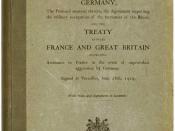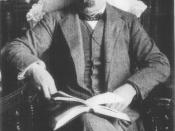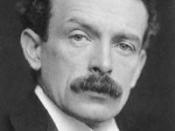The three leadership personalities of France, Germany and Great Britain were commonly referred to as "The Big Three", they involved Wilson of America, Lloyd George of Britain and Clemenceau of France. The Treaty of Versailles reflected these three personalities greatly, but some greater than others.
The Treaty of Versailles was the peace settlement signed after World War One had ended in 1918 and in the shadow of the Russian Revolution and other events in Russia. The treaty was signed at the vast Versailles Palace near Paris, between Germany and the Allies. The three most important politicians there were David Lloyd George, Georges Clemenceau and Woodrow Wilson. The Versailles Palace was considered the most appropriate venue simply because of its size - many hundreds of people were involved in the process and the final signing ceremony in the Hall of Mirrors could accommodate hundreds of dignitaries. Many wanted Germany, now lead by Ebert smashed - others, like Lloyd George were privately more cautious.
The treaty was signed on June 28th 1919 after months of argument and negotiation amongst the so-called "Big Three" as to what the treaty should contain.
David Lloyd George of Great Britain had two views on how Germany should be treated.
His public image was simple. He was a politician and politicians needed the support of the public to succeed in elections. If he had come across as being soft on Germany, he would have been speedily voted out of office. The British public was after revenge and Lloyd George's public image reflected this mood. "Hang the Kaiser" and "Make Germany Pay" were two very common calls in the era immediately after the end of the war and Lloyd George, looking for public support, echoed these views.
Georges Clemenceau of France had one very simple belief -...


